Matador Network's Blog, page 880
April 14, 2020
93-year-old woman free Coors
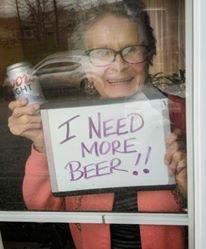
Food and supply shortages have devastated communities around the world, but there’s only one shortage this 93-year-old woman really cares about. Beer. Olive Veronesi of Seminole, Pennsylvania, was photographed in the window of her home holding a Coors Light in one hand and a sign in the other that read, “I NEED MORE BEER!” Apparently, her plea was answered.
Molson Coors showed up at her house on Monday afternoon bearing gifts. Specifically, 150 cans of Coors Light.
JUST IN: 93-year-old Olive Veronesi of Seminole, PA, who held up a sign at her window asking for more beer, has received a delivery from @CoorsLight. The brand tells me 150 cans arrived at her house today. pic.twitter.com/c2lfGFBBTS
— Darren Rovell (@darrenrovell) April 13, 2020
“I was on my last 12 cans,” Veronesi said, “I have a beer can every night. You know what, beer has vitamins in it, it’s good for you, as long as you don’t overdo it.”
When the delivery arrived, she immediately cracked one open on her porch and said, “That tastes pretty good.”
A spokesperson for Molson Coors told CNN, “When we saw Olive’s message, we knew we had to jump at the chance to not only connect with someone who brought a smile to our faces during this pandemic, but also gave us a special opportunity to say thanks for being a Coors Light fan. Even in the pre-COVID era, we would’ve been thrilled to fulfill Olive’s request. But in this moment, during these unusual times, bringing a little bit of joy to someone’s day is the least we can do.” 

More like this: It’s time to embrace the Finnish tradition of drinking in your underwear
The post A 93-year-old woman ran out of beer, and Coors came to the rescue appeared first on Matador Network.

Black American abroad during COVID
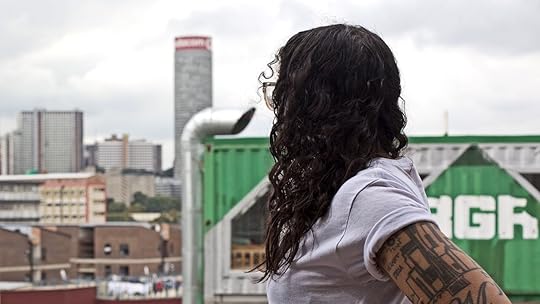
“Hey, are you good? Trump is saying Americans need to come back home.”
This is what my friend Ryan texted a couple of weeks ago. He’s a black American, originally from Miami, but is studying in Tokyo. For a second I wondered if this was by some kind of decree, and I furiously texted him back.
“Wait, I don’t get it,” I wrote, “are you saying you’re going back there?”
Several minutes passed with no response. I was starting to worry.
“Oh, no. I’m not. Unless things change.”
I sunk back into the cushions of my couch in Johannesburg, relieved, and texted him back my regards, because while many are out there furiously trying to get back to their home countries, lots of black Americans, like my friends and I, are trying to stack our decks to stay gone.
But unlike Ryan, my visa has expired, and some of my friends’ visas are expiring soon, too.
I came back to Johannesburg last December, intending to tuck in for a while. Like many Americans here, I was planning on running the border for three months before a new visa would allow me to return. Needless to say, my plans have been upturned: The coronavirus made sure of that. Now, when I leave Johannesburg, it is unlikely I’ll be able to return for six months to a year. Like some other countries, the entry restrictions added after COVID-19 was declared a pandemic could prevent me from crossing back into the country with an American passport.
Most of my friends here are black women, including some fellow Americans. For a while we watched coronavirus travel around the world from a place of relative comfort; while new countries were lighting up on the map every morning signaling new infections, we stayed clear down here for much longer than most. And we thought it would stay that way for at least another month or more, but here we are in the thick of the outbreak. Just as I was planning to leave, we watched borders close around us like dominoes, and with my options slowly dwindling, I was left looking for somewhere, anywhere, to go until the answer was finally nowhere.
I think it was on March 23 when people started seeing tanks on the streets. Even though it was only a few at first, news like this has a way of making the rounds on WhatsApp. The next night, President Cyril Ramphosa announced a comprehensive 21-day lockdown from which I am writing to you right now. South Africa is much more comprehensive than some other countries’ mandatory quarantines — the only times we are allowed to leave our homes are for groceries or medical care, and penalties can be harsh and swift. No planes in or out, and over two-thirds of land border crossings are completely closed, even to freight. The sale of alcohol and cigarettes is strictly prohibited, as is anything else not deemed absolutely necessary. VFS, the government body responsible for, among other functions, granting visa extensions is closed until further notice.
I’ve been traveling for 20 years, and this is my first time ever overstaying a visa, which expires two days into the lockdown.
My friend Courtney, another American, has until the end of May until her visa waiver expires. She’s been based in Johannesburg for over two years; she was six months in when I first met her on a Maboneng balcony over a cup of coffee.
The last time she reset her visa it was with a trip to Kenya to see a friend. It was fairly recently, but now it feels like an eternity has passed since everything was normal, and it was only a couple of weeks after she came back home that we woke to find their border was closing in two days’ time. We were shocked. We texted our friends we knew were headed to Kenya soon, warning them what they might encounter. They’ve all had to make other plans. We’ve all been making other plans, actually.
You see, we can’t just go back to the States. We’ve made lives out here and don’t have anything to return to. Out here, in the wide world, is where we’ve been able to find some of the things that have always been so elusive to us stateside.
For us, life in the States means fighting over jobs in industries that don’t value us, promote us, or pay us the same as our white and male counterparts, and then criminalizes us for wearing our natural hair. In the States, even when we try to change our circumstances, we are marginalized from academia, overlooked in recruiting, and ostracized by the prevalent agents of white feminism who never seem to believe in the veracity of our stories. Just walking down an American street we are less likely to be trusted and assumed to be criminals. We’re even found to be less attractive when trying to date online, and then, somehow, also more likely to be the victims of sexual and partner violence.
And that’s on a regular day.
Now, in the era of COVID-19, going back to the States would mean arriving on the brink of the worst recession either of us has seen in our lifetime and joining the millions of people already fighting for too few providers who treat the un- and underinsured. And as the number of cases there climbs, we increasingly believe that returning would be more than an inconvenience, it could be a death sentence. This isn’t hyperbole. And the early reports already show evidence that black people are contracting and dying from coronavirus at an escalated rate than other Americans, and while we don’t yet know if this is a failing of circumstance, education, or care, Courtney and I have our own theories.
Because for us, as black women in America, we receive disproportionately poor medical care compared to our white counterparts.
Almost 14 percent of black women in the United States are uninsured, compared to only eight percent of American white women. But even for those who do have access to health care, we are not receiving the same treatment, and the disproportionate poverty that black women live in cannot account for the disparity in our health relative to American women of other races.
In a 2005 study, the National Academy of Medicine found that “racial and ethnic minorities receive lower-quality health care than white people — even when insurance status, income, age, and severity of conditions are comparable,” and they back it up with some disturbing statistics.
In a survey of 400 American hospitals, they found that we were less likely to receive more expensive treatments even when they were generally thought to be the best course of action. They found that we are discharged earlier from the hospital, frequently at stages where discharge would be inappropriate. They found that we are way too frequently denied dialysis, radiation, cardiac care, interventions to prevent amputation. Even the maternity care we receive results in a much higher rate of maternal and infant death following pregnancy, in some areas of the country by as much as four times than if we were white.
And that’s if we can find treatment.
The struggle isn’t over once we’ve found care: We must then find a way to pay for it, which can be shockingly difficult in the States.
Back in Texas, Courtney pays about $76 for an inhaler that she needs to live and has to replace every one or two months. Here in Johannesburg, that same inhaler costs 100 South African rand. Today, as the rand is plummeting under the weight of this pandemic, that’s about $5.
And that’s just an inhaler. We shudder to even consider how much treatment on an American ventilator might cost.
Other countries that cost as much to live in have vastly more social services available to their citizens in times of crisis such as this. Courtney and I should know: We’ve been to many of them.
On March 19, the United States Department of State levied the highest travel warning available against every country in the world, a “Level 4 – Do Not Travel,” the same severity of alert that it has traditionally reserved for the likes of North Korea and Iraq. “U.S. citizens who live in the United States should arrange for immediate return to the United States,” the statement it released read, “unless they are prepared to remain abroad for an indefinite period.”
A friend of Courtney and mine, Imani, went back to the States recently. She left Joburg on a sunny afternoon, promising to be back in two weeks. She’s a filmmaker and had acquired a brief contract in DC, and we all thought we’d see her soon.
A couple of days before the lockdown, we met with the super of her building who let us into her apartment to collect her belongings. They had already found a new tenant.
We took all her things to Courtney’s apartment. We arranged her belongings between her suitcases and stored them under the sofa and in the closet. We wheeled her bike out onto the balcony and stood there, staring at the Ponte, wondering when Imani would be able to come back.
Courtney’s taking the wait and see approach: In the two months that she has left until her waiver expires, she hopes to be able to get an extension, or even better, watch this whole thing dissipate while borders pop back open.
I’m not so sure.
Sometime after the lockdown, I’ll be headed to one of the few countries where I can get a shockingly long visa on arrival, any of them that will take me, though ideally the country of Georgia. There, just like nationals from 90 other countries, my American passport will get me a year without worrying about running the border, so I could stay there pretty indefinitely. While my friends are hopeful this will all pass soon, I imagine myself getting a bit established: a little apartment by a grocery store, maybe with a shopkeep I can wave to as I pass by in the mornings when I’m allowed out. I’m preparing to stay put for a while if need be, but I’m already fantasizing about how it will feel to break out my passport, ready again to depart.
But in the meantime, if more of my black American friends are forced to leave South Africa or Japan or whatever far-flung place they’re currently in, they can come to me instead of going to our homeland. And maybe by then I’ll have found some furniture and a television, and maybe we’ll watch our president say something horrific while our country crumbles around him, and feel like our little home isn’t so weird anymore.
As nomads, the one thing we’re sure of is that plans change. Planes get canceled, and trains are brought to a halt. And right now that’s happening more than we’ve ever seen in our lives. But this is what we’ve been preparing for this all of these years on the road, and we are fortunate to be more ready than most.
But wish me luck anyway because I’ll be making a new life somewhere I’ve never been. And though I’m not quite sure what will happen, I figure I’ll be alright as long as I can actually manage to get my passport stamped.
And if you don’t want to go home, but you’re not quite sure where else to go, you’re welcome to come find me and join. I’ll be there until things change. 

More like this: What it’s like to be black in Japan
The post What it’s like to be a black American woman abroad during COVID-19 appeared first on Matador Network.

How to help families during COVID-19

As families hunker down in their homes, many parents are working from the same home — sometimes even the same room — that doubles as their child’s classroom. Cousins, aunts, uncles, and grandparents who might normally be able to give parents a break by looking after the kids are now also confined to their own homes, searching for ways to help out their loved ones from afar. Even though we’re a few weeks into the shelter-in-place regulations, exhausted parents could still use some help — and here’s how you can do so remotely.
Do online research and ordering for them.
Parents just need more free time, plain and simple. Anything that can be done remotely, regardless of how basic or boring it may be, frees caregivers up to handle what can only be done in-person. Maybe their toilet is acting up and they need help finding a plumber, or perhaps their cell phone broke and they need help researching which carriers are offering good trade-in deals.
My sister lives 900 miles away. To help her with her two kids, and to distract myself from the tragedies unfolding in New York City, I did some bureaucratic work for her. Her county was holding early voting this week, so I researched how she could request an absentee ballot online and submitted an absentee ballot request on her behalf. The process required uploading an image of her driver’s license, which we noticed expires in a few days — so my new task became researching her local DMV renewal process. I found out that, due to the pandemic, expired licenses in her county are being extended by 60 days, so I shared with her a calendar reminder to renew her license two weeks before its new expiration date. Just those few hours online gave back valuable time to my sister.
Samantha Ruiz, a nurse and mother of two in Milwaukee, expressed how helpful it’s been to have family members conduct online research on her behalf. Simple tasks like looking up which supermarkets deliver groceries and what their new hours are take her away from changing her three-year-old’s diapers, homeschooling her 10-year-old, and taking their newly adopted and overly energetic pitbull for walks.
What started with simple supermarket research turned into allowing others to do the actual shopping online, saving Ms. Ruiz even more time. “I know that I may not get exactly what I put on the list because so many items are out of stock, but given the time and hassle it saves me, it’s worth it,” said Ruiz.
Get grandparents involved.
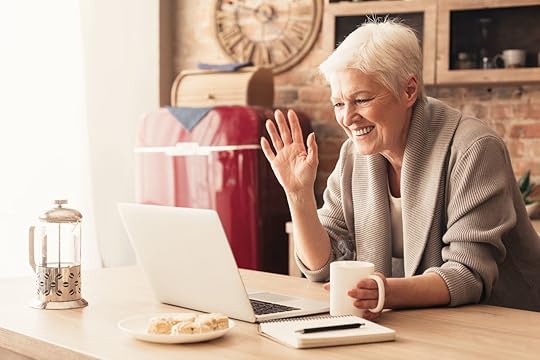
Photo: Prostock-studio/Shutterstock
Getting grandparents and elderly individuals involved is not just good for kids, it’s good for everyone. Older people are especially susceptible to coronavirus-related complications and are being instructed to take extra care to avoid contact with others. But as social isolation and solitude pose their own risks for older people, engaging grandparents from a distance is a great way to support their mental health.
Residents in nursing homes or assisted living facilities are at an even higher risk for loneliness, as many facilities are not allowing visitors unless it’s an end-of-life situation. Some seniors may not even be able to receive flowers or gifts as delivery people might not be allowed inside (check first with the facility). However, phone calls are always appreciated.
Not every senior is going to have access to or familiarity with the technology that makes video conferencing possible, so consider going “old school” and calling from your cell phone. If you have nieces and nephews, you could easily set up a three-way call between grandparents and them, and help them all while taking the burden off parents’ shoulders. (While you’re at it, remember to call on retired friends or neighbors who may not have their own grandchildren and who may be delighted to receive a call.)
Get creative with video chats.
In cases where grandparents are able to use online video tools, you could tap into their knowledge to help take some of the homeschooling burden off of parents. One community in Connecticut even created a makeshift Grandparents’ Academy to tap into the wisdom of the older generation. By pooling kids and grandparents from their neighborhood and setting up simple online calendars, grandparents can offer “classes” on history, civics, language, or whatever their expertise may be.
Video conferencing and chatting is getting a lot of attention right now as it’s made face-to-face interaction easier while social distancing from within the same city or across closed country borders. Sometimes, a quick video conversation will suffice to check-in, but to keep the attention of young children, video chatting can be most useful for visual-related activities.
Jeff Thomason and Melody Wren of Toronto, Canada, told me that FaceTiming with their grandkids (ages three, six, and six) allows them to feel more connected to each other. According to Ms. Wren, it typically takes the kids a few minutes to ease into the awkwardness of not being in the same room, but once they get comfortable, it’s all giggles. Mr. Thomason’s finger puppet shows have proven particularly popular, as have Ms. Wren’s improvised arts and craft classes.
Ms. Wren asks the parents to fish out 10 items from the recycling bin and have them on hand, along with glue and tape. “When we get on the video call, I ask them to build a bridge, then a house, then a train, a castle, and a monster. It gives them something to focus on and it’s fun for all of us to see each other.”
Help grandparents with talking points.
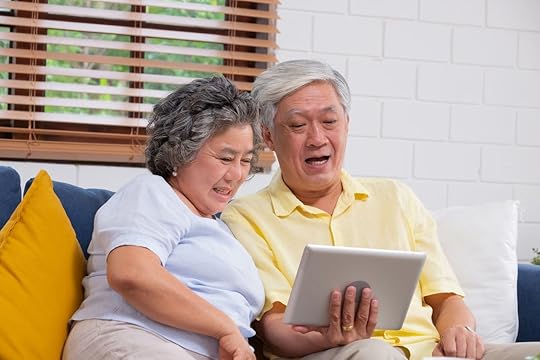
Photo: weedezign/Shutterstock
If you want to free up some parents’ time by either speaking with their kids directly or connecting them with grandparents, talking points can be very helpful. That way young kids don’t have to lose interest when grandfather repeats an overly long story, and in turn, grandparents can engage kids in topics they’d actually like to discuss.
While auntie might not be into Minecraft and grandpa may have missed the latest Marvel movie, you can still give them pointers on how to talk about them. Grandpa can ask his granddaughter about the latest Marvel movie with questions like: “What did you like about the movie?” “How was it different from the last one?” “What was your favorite part?” “Who were your favorite and least favorite characters?” and “What did you like or dislike about them?”
You can also search for topics that may be easier to discuss. For example, since so many restaurants are closed, and kids aren’t eating school lunches, families are preparing many more meals at home, creating an opportunity to ask kids about this new experience. You can ask the little ones about the different foods they are eating and what they think of them. You could inquire if kids are helping to prepare them and discuss new recipes they’d like to try, or what’s been the most delicious thing they’ve eaten this week.
Lend emotional support.
Talk may be cheap in some realms of life, but right now, emotional support can be just as valuable as actions. Jill Brown of Evergreen, Colorado, about 30 miles west of Denver, told me that the most valuable support she’s gotten has been from friends just checking in to make sure she’s okay.
Though a busy mother herself, now working her city government job from home with her rambunctious four-year-old daughter, she stressed to me the importance of offering consistent emotional support to friends of hers who are pregnant. One of them was scheduled to deliver two weeks from when we spoke.
“When I was pregnant under normal conditions,” says Brown, “I remember crying over silly things like not knowing which restaurant to pick for dinner.” Being pregnant is stressful and difficult enough under ordinary circumstances, so she aims to send the soon-to-be-parents bits of joy in the form of meditation videos, energetic mixtapes, and Golden Girls-themed comic relief.
Ms. Brown believes that what parents need isn’t always related to their kids. Sometimes, it’s just to be remembered as an adult and as an individual who needs to feel connected to others. Brown says, “I’m not offering any specific answers because I don’t have the answers. I just want them to forget about this mess for a minute, laugh out loud, and know that they’re not alone.” 

More like this: How to reduce family stress at a time of crisis
The post How to support families with kids when you can’t be there in person appeared first on Matador Network.

Benefits of eating organ meat
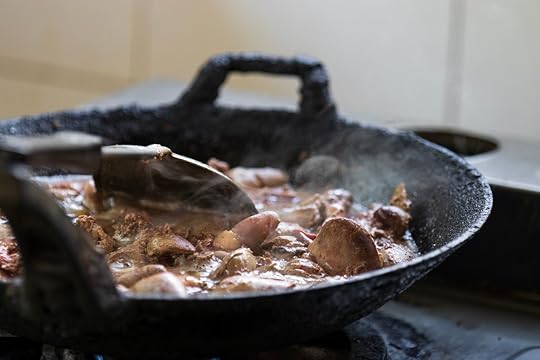
Pulled lamb leg, braised pork shoulder, sauteed chicken breast: Most menus from New York City to Paris seduce us with these familiar parts of the animal. The meat is typically the leanest possible cut from the cleanest, most presentable area. But have you ever experienced the taste of a hearty chicken liver sauteed in onion and olive oil that’s served sizzling straight out of the oven? Or how about a chicken heart melted under a layer of butter on a bed of mushrooms? Organ meat might be underappreciated at many fine-dining dinner tables, but these cuts are delicious, exciting, healthy, and environmentally friendly.
In many countries around the world — including Morocco, Egypt, and Bulgaria — chefs welcome a variety of animal parts to the cutting board. It’s not only practical, but it’s also beloved, says Atanas Dimitrov, chef and owner of Pod Lipite (Under the Linden Trees) in Sofia, Bulgaria.
“I inherited the restaurant from my father and continued his legacy of serving organ meats for over 25 years,” Dimitrov says. “People love it — both locals and foreigners who have never tasted a cow’s brain in their life come asking specifically for offal. How anyone would throw it out is beyond me.”
Although the beauty of organ meat is far from literal, its appeal lies in the diverse selection of animal parts that can be fried and offered as a snack or sauteed and served as a main. Some home cooks may feel intimidated and perplexed when it comes to offal preparation, but the old motto “less is more” applies here. The foolproof way to cook any organ meat is to simply saute it with a little oil and onion. The main goal is to preserve the richness of the meat and not overpower it with spices — a pinch of salt and black pepper will do just fine.
Here’s why we should step out of our comfort zones and bring diversity to our culinary skillsets by adding offal to our kitchen repertoire.
Organ meat is easy to prepare.
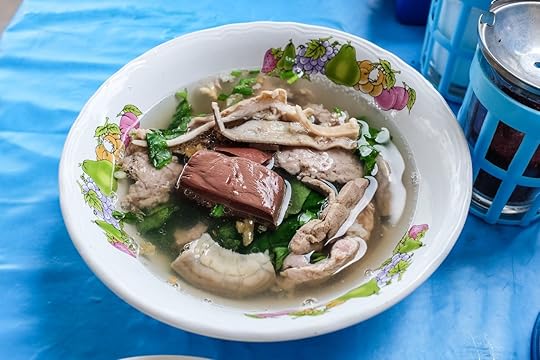
Photo: thanyathornS/Shutterstock
When it comes to the brain and tongue, texture is key. Preparation here includes two simple steps: boiling and frying. A serving of tender cow brain makes for an excellent alternative to boring chicken nuggets. Boil the brain in a broth of peppercorn and garlic to soften it and add a gentle herbaceous flavor. The lobes should be cut and rolled in flour and breadcrumbs, coated in a mix of egg and milk, and then quickly dipped in the heated oil to achieve the perfect balance between soft and crisp. Cow tongue follows a similar method of preparation. A broth of rosemary, bay leaves, and a few garlic cloves impart each fiber with flavor.
As we move lower to mid organ meats like the heart and liver, the texture becomes chewier and a bit tougher. These cuts are excellent for stir-fries. Veal lung makes for a hearty soup or dumplings, but when it comes to the stew, no organ does better than the pork or veal belly. All that’s needed to prepare this stew at home is the cleaned out belly meat sliced in thick chunks, a little butter, milk for thickness, vinegar, and red chili pepper. Bulgarian culture swears by it as the ultimate hangover cure.
Slurping a hot pork belly soup on a cold winter night is the ultimate eating pleasure. When it comes to the spleen, home cooks can get even more creative. In Moroccan cuisine, cow and beef spleen is stuffed with rice, olives, onion, garlic, parsley, cilantro, and eggs. The dish is ready to eat in under an hour and can feed an entire family.
Eating organ meats can reduce food waste.

Photo: Lamhub/Shutterstock
When it comes to carnivorous dishes, the scales of the market are tipped in favor of the leanest, prettiest cuts. Cow brain is still considered an exotic meat in much of the United States. As a result, tons of offal is wasted because it’s deemed unappealing by mass culture. Eating more organ meats would greatly decrease food waste across the globe.
According to a study by the American Cancer Society, eating more offal, along with other waste mitigation efforts, could reduce food waste by more than 40 percent in a country like Germany.
Organ meat is nutritious.
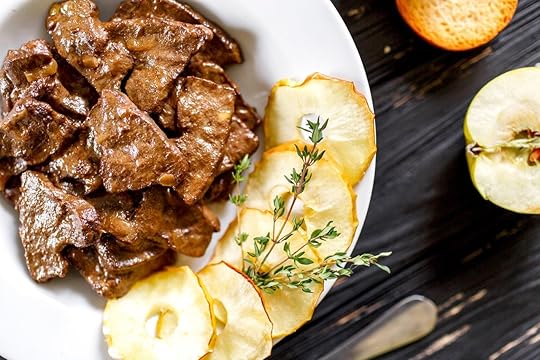
Photo: bondart/Shutterstock
While white meat is considered the holy grail of health due to its high protein content and little fat, offal is also a great source of nutrients. Liver and liver products, like Danish leverpostej and French pâté, are rich in Vitamin A. Chicken hearts are full of zinc, iron, and selenium and very low in carbohydrates.
Anthony Bourdain once said, “To me, life without veal stock, pork fat, sausage, organ meat, demi-glace, or even stinky cheese is a life not worth living.” Prejudice has no room in the kitchen. We should all make offal a staple in our kitchens and proudly serve it, indulge in it, and support the environment by reducing food waste. 

More like this: The story of Atlantic cod told through seven recipes
The post Why we should eat more organ meats appeared first on Matador Network.

Army vet raises money for NHS
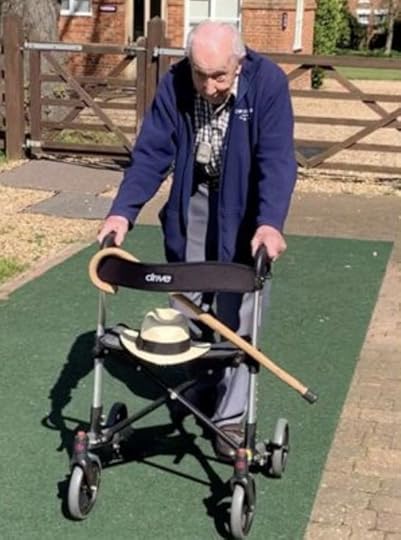
It might sound unlikely and ill-advised that a 99-year-old could raise money for a good cause by pushing himself to the physical limit, but that’s exactly what this British war veteran is doing.
Captain Tom Moore, a WWII war veteran, raised over $3.5 million for British healthcare workers through NHS Charities Together by attempting to walk the length of his garden 100 times before his 100th birthday on April 30, 2020.

Photo: Hannah Ingram-Moore/Facebook
Since breaking his hip, Moore has used a walker to get around. But that’s not deterring him from doing his part to help the NHS. According to Moore, “The more [money] comes in the better, because when I was in hospital with my hip and then with my head, the service I got…was absolutely unbelievable. At all times they were so good, so cheerful, so friendly.”
Ellie Orton, chief executive of NHS Charities Together, said, “I think I absolutely join the rest of the country in being truly inspired and profoundly humbled by Captain Tom and what he has achieved. Thank you for being an inspiration and a role model.”
Moore turns 100 on April 30, and though he only hoped to raise around $630,000, he has already raised more than four times the amount intended. That doesn’t mean he’s slowing down, though.
“I shall continue up and down here after my birthday. I’ll keep on going whilst people are still contributing to the National Health Service,” he said.
To keep Tom walking and donate to the cause, visit the official fundraising page. 

More like this: Donate your ski goggles to medical workers on the front lines
The post 99-year-old British army veteran raises over $3.5 million for health services appeared first on Matador Network.

Conspiracy theorists burning down 5G
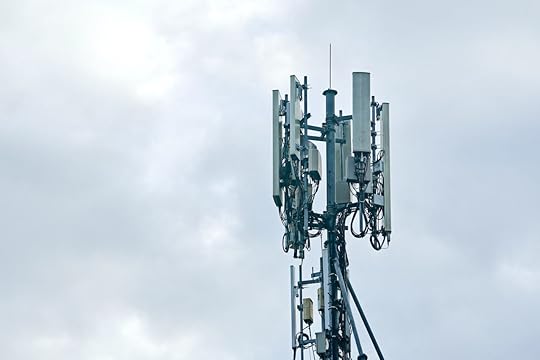
In times of dire crisis, some people put on their tinfoil hats and jump to some ludicrous conclusions. Amid the coronavirus pandemic, conspiracy theorists have tied 5G technology to the spread of the coronavirus.
According to James Temperton for Wired, there are several unsubstantiated theories that link 5G technology to spread the virus; some say that 5G weakens your immune system and makes the effects of COVID-19 worse, others claim that 5G causes COVID-19-like symptoms, and others go as far as saying that the lockdowns are a cover to install 5G networks.
None of these claims have been proven by science, or anyone even resembling an expert, but that has not stopped believers in conspiracy theories to burn down the 5G towers to remedy the situation.
Anti-5G protestors have been attacking cell towers sites in the UK, Netherlands, New Zealand, and Ireland. A total of nine attacks have occurred since Friday in the Netherlands, including two on Monday night, and at least 20 have taken place in the UK since last week.
Rob Bongelaar, director of The Monet Foundation, which oversees the placement of cell towers, told Dutch newspaper De Telegraaf, “The availability of a reliable digital infrastructure is essential. The connections are desperately needed for hospitals and care homes…and then there are those who deliberately set radio masts on fire. Incomprehensible and unacceptable.”
Social media platforms such as Facebook, YouTube, and Twitter seem to have been extremely conducive to the spread of the theories. Although Facebook has vowed to get more aggressive against groups promoting these conspiracy theories, this might be one fire that’s too late to put out. 

More like this: How the rise of virtual drinking will change the way we socialize
The post Conspiracy theorists are setting fire to 5G cell phone towers they believe are linked to the COVID-19 crisis appeared first on Matador Network.

Disney releases Dole Whip recipe

Parts of the United States are officially on their fifth week of quarantine, and there are no signs that travel bans and self-isolation orders are going to let up any time soon. That means your vacation probably got canceled and you haven’t left the house, except for perhaps the occasional trip to the grocery store, in quite some time. Thankfully Disney, which closed its parks in the US in March, is bringing a tropical vacation straight to your kitchen. The theme park of choice for kids and kids at heart has released its famous and wildly popular pineapple Dole Whip recipe to the public, which means you can make it at home, even if you can’t meet Mickey in person this year.
The soft serve dessert, which floats in a cup of pineapple juice, first debuted at Aloha Isle in the Adventureland area of the Magic Kingdom in the 1980s. It’s safe to say it has since become one of the most iconic snacks sold at Disney parks. Luckily, the recipe doesn’t require a sprinkle of Disney magic. It’s simple to make in your own kitchen, and that’s probably an especially appealing prospect for families who had planned a Disney vacation that is now, sadly, on hold.
According to People, all you need to do is blend a scoop of vanilla ice cream, two cups of frozen pineapple chunks, and 4 ounces of pineapple juice (from the can will do just fine). These ingredients are all available at your local grocery store, so whether you’re having your food delivered or braving the store in person, you’ll be able to find everything you need to make this dessert at home. Disney parks might be closed indefinitely, but now you have a sweet frozen treat that will transport your whole family to happier times.
The company recently released its recipe for churro bites, too. Hey, if you can’t enjoy the roller coasters this year, you might as well eat like Disney is in your own backyard. 

More like this: The world’s best restaurant prepares thousands of meals for front-line workers
The post Make Disney’s famous Dole Whip soft serve at home with the official recipe appeared first on Matador Network.

Lego making face visors

In Denmark, protective masks for medical professionals are coming from an unlikely place. Lego, the Denmark-based toymaker, announced on Instagram that it has started manufacturing protective face visors for the country’s healthcare workers. To accomplish this, Lego made modifications to some of its molding machines. Now, instead of making little yellow people, the machines will make visors with wide transparent plastic covers and handles to protect healthcare workers’ eyes, a portal entry for the virus.
View this post on Instagram
A post shared by LEGO (@lego) on Apr 9, 2020 at 7:00am PDT
“This week we began to make visors at our factory in Billund for healthcare workers on the frontline in Denmark,” Lego said. “We are so incredibly proud of the team who made this happen. [The team] worked around the clock to create designs and make molds that can produce more than 13,000 visors a day. We are grateful to have such talented, dedicated and caring colleagues.”
Lego is set to produce 13,000 visors a day for the foreseeable future, which should go a long way toward keeping healthcare workers safe in Denmark’s fight against COVID-19.
View this post on InstagramA post shared by LEGO (@lego) on Mar 30, 2020 at 4:02am PDT
The toy company has contributed in other ways, too. On March 30, 2020, Lego announced a $50 million donation through the Lego Foundation for children in need, including those under pressure from COVID-19. Today, the company announced that it was donating 500,000 Lego sets to children in need of play. 
View this post on Instagram
Australian couple mistakenly fined

If there was any doubt that governments around the world are taking their coronavirus lockdowns seriously, let this story from Australia put those doubts to rest.
Jaz and Garry Mott, a couple living in the state of Victoria in Australia, decided to spend the monotonous quarantine hours by sorting through old travel photos from 2019 and posting them onto Facebook. The pair subsequently received a fine from the government for their nonessential travel and violation of lockdown rules.
On April 5, Mott posted a total of 12 photos of herself and her husband, tagging destinations like Lakes Entrance, which is around two hours from their house in Traralgon. On April 9, a police officer showed up at their door and handed Mott a fine of $1,060 per person for “failure to comply with a direction given to a person in the exercise of a power under an authorization given under section 199.”

Photo: Jaz Mott/Facebook
More specifically, they were fined for their alleged trip to Lakes Entrance. However, after Mott contacted the local media, the fine was revoked by the police.
According to the Victoria Police Department, “This incident has been reviewed and the decision has been made to withdraw the infringement notice. On occasion, errors will be made however that is why a review process exists to ensure instances such as these are identified and rectified.”
Mott told The Independent that the police have forbidden her from posting any more holiday photos on social media and threatened her with an arrest if she continued. 

More like this: In these locked-down cities, animals are taking over the vacant streets
The post Australian couple mistakenly fined $1,000 each for violating lockdown appeared first on Matador Network.

Austria starts to lift lockdown

Austria is the first European country to relax its strict coronavirus lockdown measures, reopening small shops, public parks, and DIY and gardening centers on Tuesday after being closed for nearly a month.
The country hopes to gradually go back to normal, while still abiding by strict social distancing measures like wearing masks in supermarkets, on public transportation, and in taxis.
Austria’s quick and decisive handling of the crisis has drawn praise from the rest of Europe, particularly Germany, which is weighing the decision of relaxing its own restrictions.
Indeed, all eyes are on Austria right now, as a bellwether example of how a reopening might look. Currently, Austria will allow shops smaller than 4,300 square feet to open, but only with one customer at a time for every 215 square foot. And shops will only be open between 7:40 AM and 7:00 PM. Violating these rules could result in a fine of up to $4,500.
In addition to small shops and parks, gas station shops, car washes, and bicycle repair shops will also be allowed to open. In May, this will extend to hairdressers and cosmetic salons. Restaurants, however, are not scheduled to open until at least mid-May. 

More like this: The 7 best coffee houses in Vienna
The post Austria is the first European country to ease coronavirus lockdown measures appeared first on Matador Network.

Matador Network's Blog
- Matador Network's profile
- 6 followers



